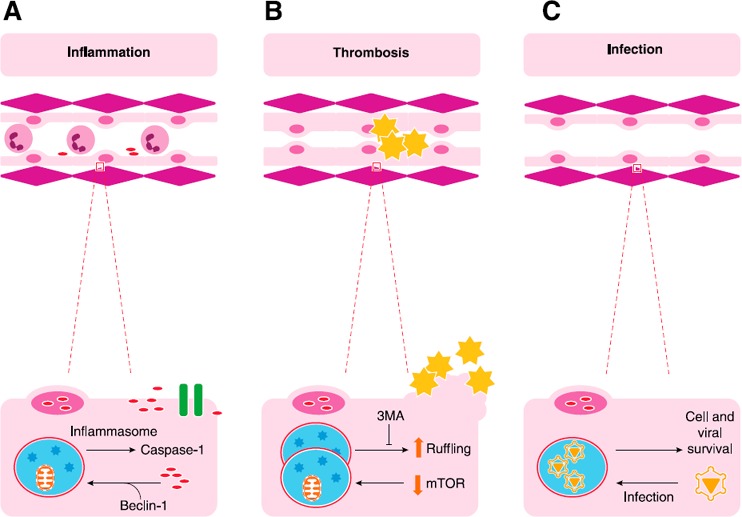Figure 3.

EC autophagy and cell‐cell interaction. A critical role of the endothelium is modulation of cell‐cell interactions, particularly those involving leukocytes and platelets. (A) Translocation of HMGB1 from nuclei displaces beclin‐1 from BCL2, which induces autophagy. Autophagic pathways can interact with the inflammasome to release of cytokines, such as IL‐1b and IL‐18, through activation of caspase‐1. HMGB1, a nuclear protein and damage‐associated molecular pattern (DAMP) molecule, can also be released by caspase‐1–mediated pathways in Mϕs and can recruit inflammatory cells to areas of damage. (B) Typically, quiescent endothelium should not attract platelets; however, EC autophagy has been implicated in platelet recruitment as a result of cytoskeletal changes that lead to membrane ruffling. These mechanisms are thought to lead to thrombosis induced by rapamycin and sirolimus‐coated coronary stents. (C) Of interest, organisms, such as EBV, can usurp autophagic pathways to maintain a viral reservoir by promoting cell survival. Alternatively, GBS infection of cells induces autophagy, which clears bacteria, perhaps via TLR2‐mediated pathways (not shown).
